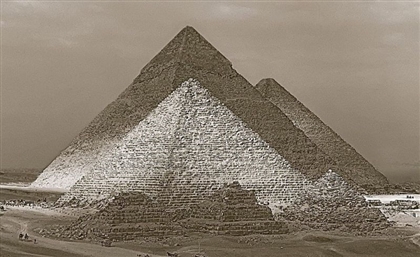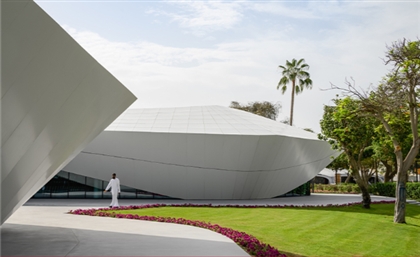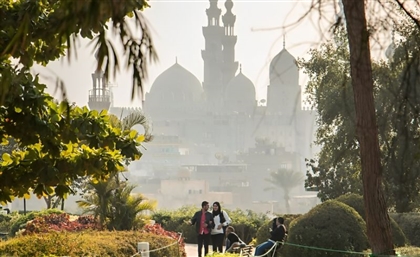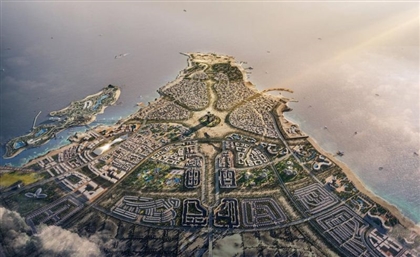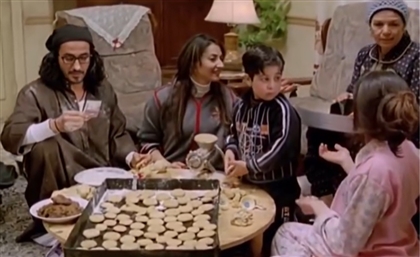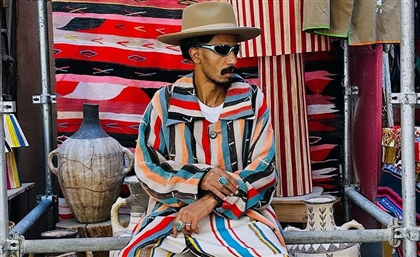Take a Deep Look at Egypt's Majestic Eco-Friendly Underwater Museum
Because museums above sea level are so last season.
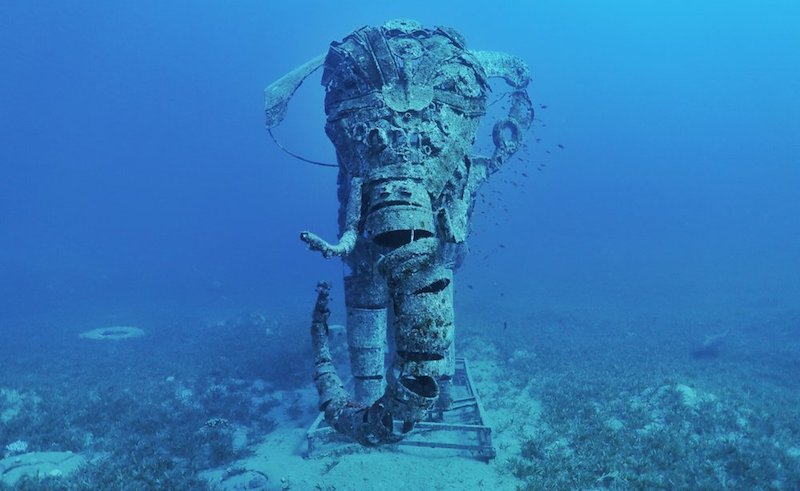
Among Egypt's abundance of sights and scenes, ranging from ancient temples, to historical complexes and artifacts wrought with culture and history, is another gem that attracts both local and international visitors: The Red Sea. The North-African country's appeal is not merely limited to its awe-inspiring architecture on-ground, but to its underwater landscapes as well. Having had several spots recommended by international diving magazines, Egypt's Red Sea is home to stunning coral reefs, otherworldly sea creatures, and some of nature's most beautiful underwater scenery.
Over the years, however, the marine life has been suffering in some areas of the Red Sea, having to host large numbers of divers with the repercussions manifesting themselves on the ocean's coral reefs. I-Dive Tribe is a team of local divers from different vocations and backgrounds, who've created an underwater museum hosting breath-taking sculptures that leave a positive impact on the environment. A self-funded organisation founded by Abdel-Rahman Mekawy and co-founded by Farah Akram, I-Dive tribe is made up of a group of locals who aim to maintain what they've deemed their treasure trove by heading a variety of marine protection projects and awareness initiatives. The museum showcases art pieces that are eco-friendly, and propagate the birth and growth of our dying coral reef.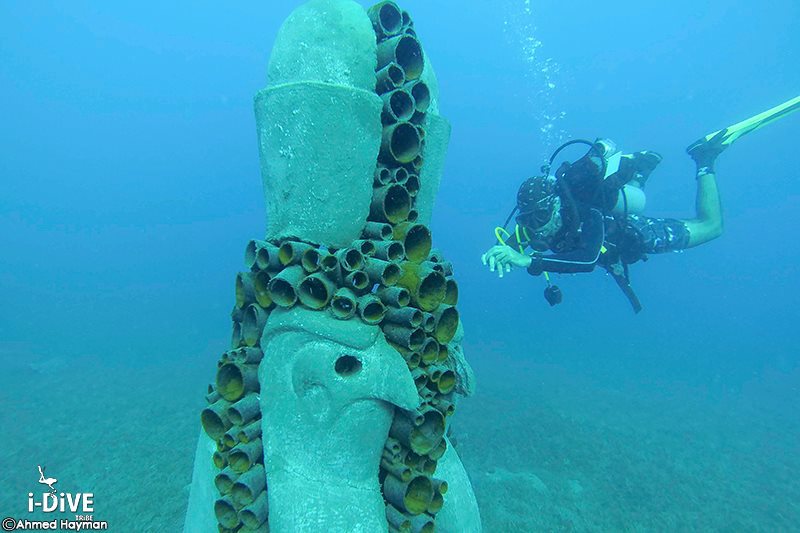 “I was born and raised in Luxor, so much of my inspiration for the pharaonic statues, which are part of the underwater museum, stems from growing up around a lot of history and monuments from the past,” says Hamed Mohammed Mostafa, the sculptor of all seven statues in the underwater museum. "So I made the God Horus, who symbolises protection and the God Bess, who symbolises joy, happiness and festivities.”
“I was born and raised in Luxor, so much of my inspiration for the pharaonic statues, which are part of the underwater museum, stems from growing up around a lot of history and monuments from the past,” says Hamed Mohammed Mostafa, the sculptor of all seven statues in the underwater museum. "So I made the God Horus, who symbolises protection and the God Bess, who symbolises joy, happiness and festivities.”
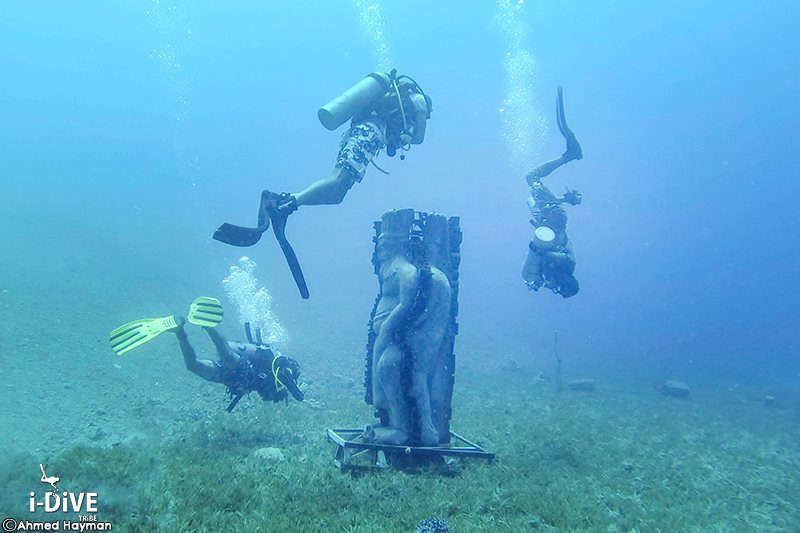
All the materials used to construct the underwater sculptures are chosen to specifically suit the environment they're being placed in. Mostafa - who has a masters in the interaction of different materials with marine life - makes sure to create designs that are inviting for the growth and natural interaction of the sculptures with the seas’ environment, without compromising their artistic essence.
“Horus is made out of cement. There are little round metal circles both big and small so that the big fish can have space to live and the small fish can pass through,” explains Hamed, a sculptor in the team. “And Bess already has a Moray eel living in it as well as other, smaller fish.”
Having initially installed statues in Mashraba in 2012, the conditions and positioning weren’t optimal for the growth of the corals. The three initial statues are made up of two chairs merging with a human head, and a table designed to resemble a donkey. The four more recent statues were placed in 2014 and 2017 in the lighthouse. The lighthouse collection is made up of seemingly unrelated characters with nothing tying them together, except for the efforts and devotion of a group of divers to the natural habitat that has become akin to their second home.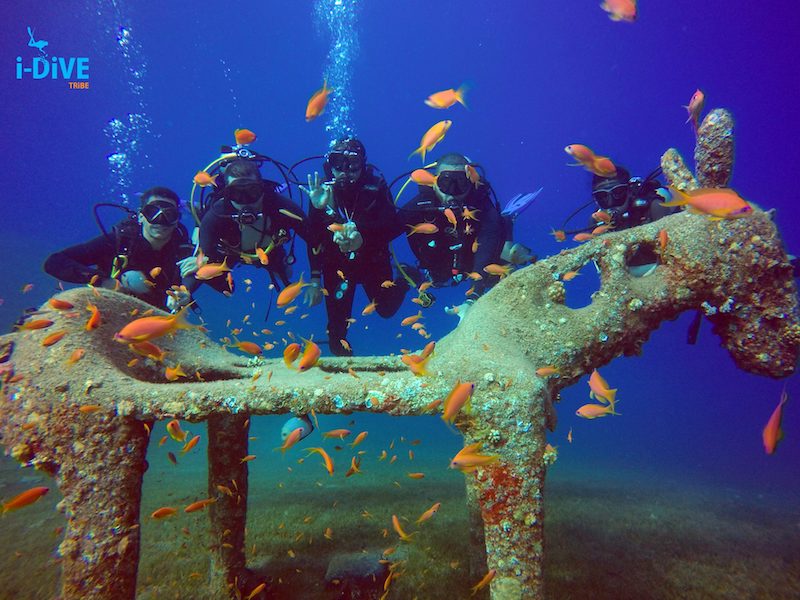 “In Dahab, the lighthouse is the spot for any diver still at a beginners' level, and what happens is that the movement of their fins (which they’re still learning to control) causes them to sometimes hit the corals. These statues take the attention away a little from the coral reefs. When the the statues were placed, coral reefs started growing on them,” explains Ahmed Hayman, a photographer by vocation and an I-Dive Tribe member at heart.
“In Dahab, the lighthouse is the spot for any diver still at a beginners' level, and what happens is that the movement of their fins (which they’re still learning to control) causes them to sometimes hit the corals. These statues take the attention away a little from the coral reefs. When the the statues were placed, coral reefs started growing on them,” explains Ahmed Hayman, a photographer by vocation and an I-Dive Tribe member at heart.
The movement of the divers' fins also causes minuscule ripples in the water, which break off parts of the coral reef. That’s in addition to global warming which causes coral bleaching, which is when the corals start losing their color, and the long-term effect if the stress continues is partial, if not complete destruction. Gamal Diab, who’s been diving since 2005 and a devoted member of the I-Dive Tribe, tells us that the inspiration behind creating an underwater museum stemmed from the team's urgency to save the residents of the waters they dive in.
“Dahab is where we always dive; it’s our spot and we’ve been doing it for years. We saw the deterioration of the coral reefs with our own eyes. The fish that used to be close to the shores have sought asylum further away from the main sites, especially the lighthouse,” emphasizes Diab on the regressing beauty and condition of Dahab's seas.
Finding its eternal resting place by the two statues, gods Bess and Horus, is a life-sized metal elephant that Moustafa built by assembling recycled metals, old televisions and a series of random junk, including hookas and gas tubes which have all been cleansed of any harmful chemicals or residues. The elephant, like its counterparts, is an eco-friendly work of art.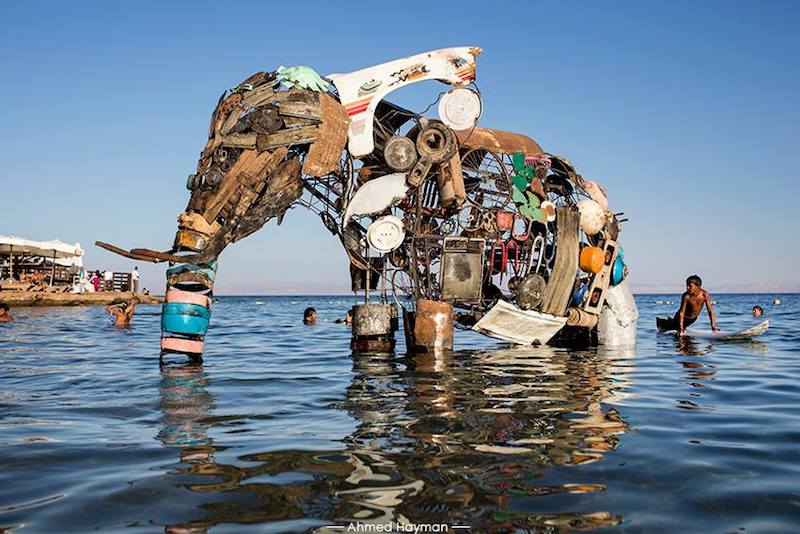 “The elephant had the most hype surrounding it. It’s the size of an actual elephant, and just…majestic.” says Diab of the statue. “We reached out to universities abroad to ensure that the material we were using wasn't harmful to the environment, before proceeding. Metal and rust act like medecine; if given in the right doses, they help the coral reef, and that’s what happened with the elephant, the coral reef grew on the piece in no time.”
“The elephant had the most hype surrounding it. It’s the size of an actual elephant, and just…majestic.” says Diab of the statue. “We reached out to universities abroad to ensure that the material we were using wasn't harmful to the environment, before proceeding. Metal and rust act like medecine; if given in the right doses, they help the coral reef, and that’s what happened with the elephant, the coral reef grew on the piece in no time.”
The elephant has even been claimed as a home by an endangered species of fish. Home to a variety of sea creatures who’ve found shelter in these statues, the underwater museum also hosts a statue honouring Egyptian Guinness world record-breaker for the deepest dive, Ahmed Gabr. The ex-Egyptian army officer, ultimately left his career to take a U.S. Army Combat Diver course, eventually becoming the only certified U.S. army combat diver in the Middle-East. Diab adds that the record-breaker's statue is “designed like legos. It’s made up of almost 100 pieces. He was constructed outside the water but he was assembled underwater, like a puzzle.”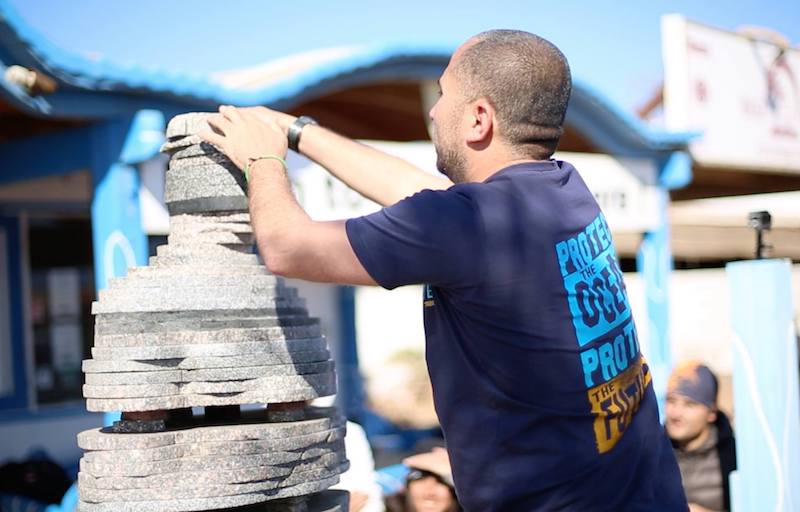 “The artistic inspiration behind Ahmed Gabr is Ptah. In Egyptian mythology, Ptah is the creator of earth. The name Egypt was derived from the mythical creator’s name. The Oscars’ statue also found its inspiration in Ptah. We always try to create or get inspired by elements that are both very Egyptian and cultural," says Diab.
“The artistic inspiration behind Ahmed Gabr is Ptah. In Egyptian mythology, Ptah is the creator of earth. The name Egypt was derived from the mythical creator’s name. The Oscars’ statue also found its inspiration in Ptah. We always try to create or get inspired by elements that are both very Egyptian and cultural," says Diab.
Each of the statues are designed with an artistic vision, an eco-friendly approach and a cultural inspiration. The thought put into the sculptures' interaction with their environment covers every single angle including their placement, which wasn’t allocated haphazardly.
“I like to call this underwater agriculture. Why we decided to continue the museum in the lighthouse and not Mashraba is because Mashraba is up-current, so the coral’s larvae go to the other side,” elaborates Diab. “ With the lighthouse, it’s down-current so we place the statues in a spot where, once the larvae is released, they manage to hold on to the statues and grow on them."
The museum is only one of a multitude of projects in I-Dive Tribe's quest to save the Red sea. The non-profit organisation has cleanups after high seasons, wherein Dahab’s dive centres take part by lending them the equipment that are required for the dive pro bono, among many other conservatory projects and awareness initiatives.
To find out more about I-Dive's beautifully-dedicated tribe, take a look at their Facebook page and Instagram.
All images in the article are credited to I-Dive Tribe's photographers Ahmed Hayman and Sayed A. El Sayed.
- Previous Article Dr.Sisilove or How (Not) To Diffuse A Bomb
- Next Article This New Sunglasses Collection Is Sure To Jazz Up Your Sahel Summer
Trending This Week
-
Apr 10, 2024
-
Apr 10, 2024




